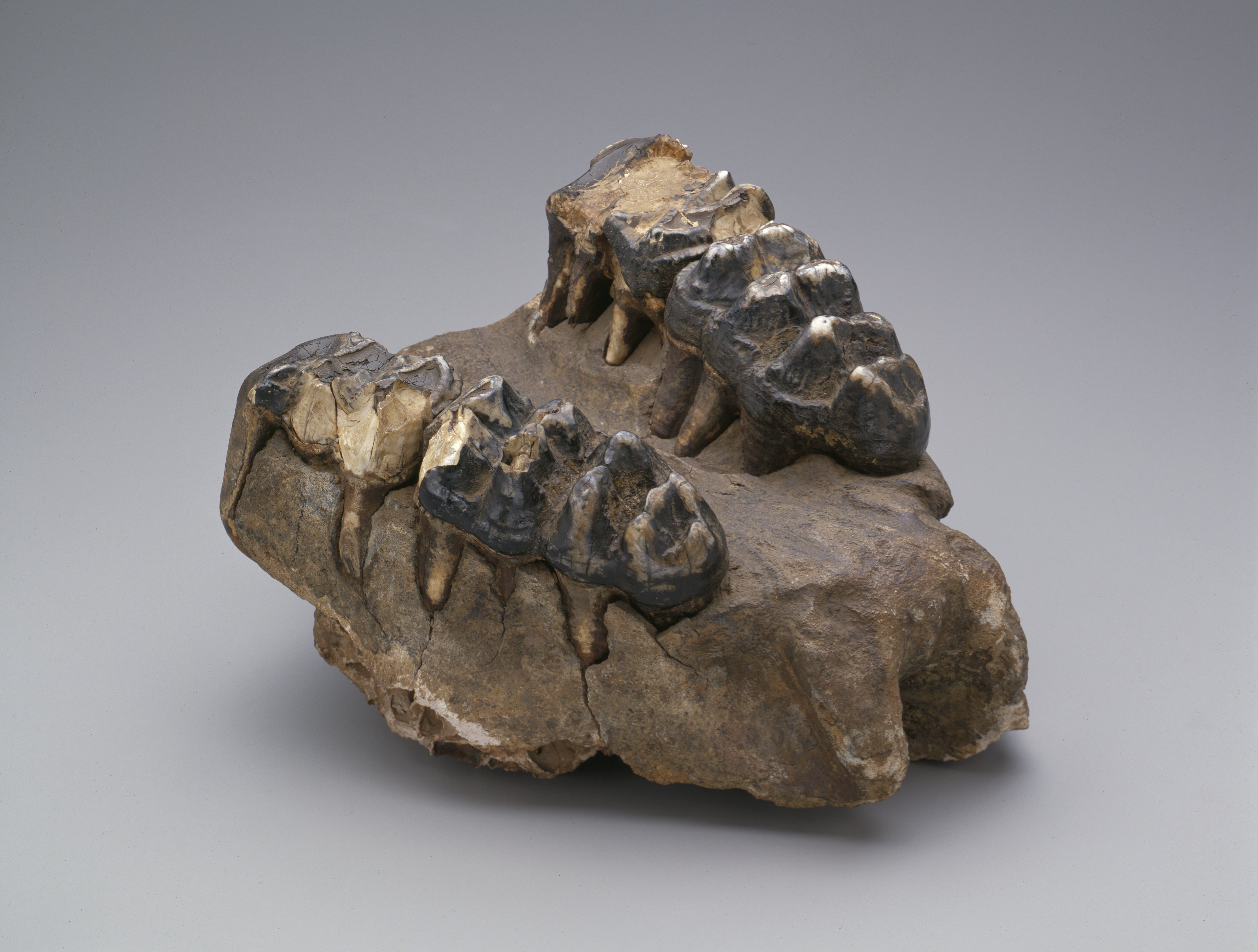
During prehistoric times, the area of present-day Big Bone Lick, Kentucky, was frequented by large mammals that became trapped in the marshy waters. As early as the 1730s, curiosity-seekers had been exploring the area and marveling at the large fossils they found there, including those of the mastodon.
In 1797, the American Philosophical Society formed a committee, headed by Thomas Jefferson with Charles Willson Peale and Dr. Caspar Wistar as members, whose mission was "to collect information respecting the past and present state of this country." In a circular letter sent out by the committee in 1798 to "lovers of science," the first item on a list of priorities was "to procure one or more entire skeletons of the Mammoth, so called, and of such other unknown animals as either have been, or hereafter may be discovered n America." The Great Salt Lick on the Ohio, known as Big Bone Lick, was a rich site for fossil finds. Jefferson probably knew Big Bone Lick as early as 1766 when he met Dr. John Morgan in Philadelphia who had collected "mammoth" (now known as mastodon) specimens from it. He also described the ancient salt lick, now in Kentucky but originally part of Virginia, in Notes on the State of Virginia.[1]

As president of the United States, Jefferson established the same objective for the explorers Meriwether Lewis and William Clark's expedition to the Northwest as that held by the American Philosophical Society: Learn more about all aspects of America. One of Meriwether Lewis's stops on the westward journey was at Cincinnati, Ohio, where he sent a group of Big Bone Lick fossils to Jefferson (which were lost in transit) and wrote a detailed report of Dr. William Goforth's excavation of the Lick.[2] The return of the explorers in 1808 provided another opportunity for gathering fossils for the Society. Jefferson financed William Clark's return to Big Bone Lick in 1807 to collect mostly head and foot bones missing from the Society's "mammoth" skeleton that Charles Willson Peale was assembling.[3]

Clark's dig was an immense success. It netted over 300 bones of various species, included the coveted "mammoth" cranium. The bones were sent to Jefferson at the President's House. The sheer volume of the collection gave Jefferson the idea to send duplicate specimens to the National Institute of France.[4] He enlisted his old friend Dr. Wistar to come from Philadelphia to assist in the selection process.[5] With bones spread out in the rooms of the President's House, Wistar spent the early part of July 1807 writing a report on the collection and selecting the contents of three boxes to be sent to France. There the fossils became part of the Museum of Natural History, where they became critically important to the study of paleontology in France.[6]
The remainder of Jefferson's collection was divided between the Society and Monticello, where the fossils were displayed in the Entrance Hall. "There is a tusk and a femur which Genl. Clark procured particularly at my request for a special kind of Cabinet I have at Monticello," Jefferson wrote to Wistar.[7] Visitors to Monticello recorded seeing upper and lower jawbones, tusks, thigh bones, a head, and teeth of the "mammoth" in particular, as well as bones from other animals as well as petrifications.[8]
After Jefferson's death the Monticello collection was transferred to the University of Virginia, where it was first exhibited in the Rotunda. The American naturalist Richard Harlan recorded seeing the collection in 1831, and that same year one fossil from the university was lent to the American Philosophical Society for study there.[9] No record of the fossil collection at the university exits after 1848 and many surviving specimens today remain unidentified.[10]
The specimens given to the American Philosophical Society were transferred to the Academy of Natural Sciences in Philadelphia in 1849, where over fifty bones from Jefferson's collection remain today.[11]
- Text from Stein, Worlds, 400, 402
1807 February 25. (Jefferson to Dr. Casper Wistar). "Capt Clarke (companion of Capt Lewis) who is now here agrees, as he passes through that country to stop at the lick, employ labourers, & superintend the search, at my expence, not that of the society, and to send me the specific bones wanted, without further trespassing on the deposit .... if therefore you will be so good as to send me a list of the bones wanting ... the business shall be effected without encroaching at all on the funds of the society ...."[12]
1807 December 19. (Jefferson to Dr. Casper Wistar). "I have lately recieved a letter from Genl. Clarke. he has employed ten labourers, several weeks at the Big-bone Lick, & has shipped the result, in 3. large boxes, down the Ohio, via New-Orleans for this place, where they are daily expected. he has sent 1. of the Mammoth, as he calls it ... 2. of what he calls the Elephant .... 3. of something of the Buffalo species .... there is a tusk & a femur which Genl. Clarke procured particularly at my request for a special kind of Cabinet I have at Monticello."[13]

ADDRESS:
1050 Monticello Loop
Charlottesville, VA 22902
GENERAL INFORMATION:
(434) 984-9800
